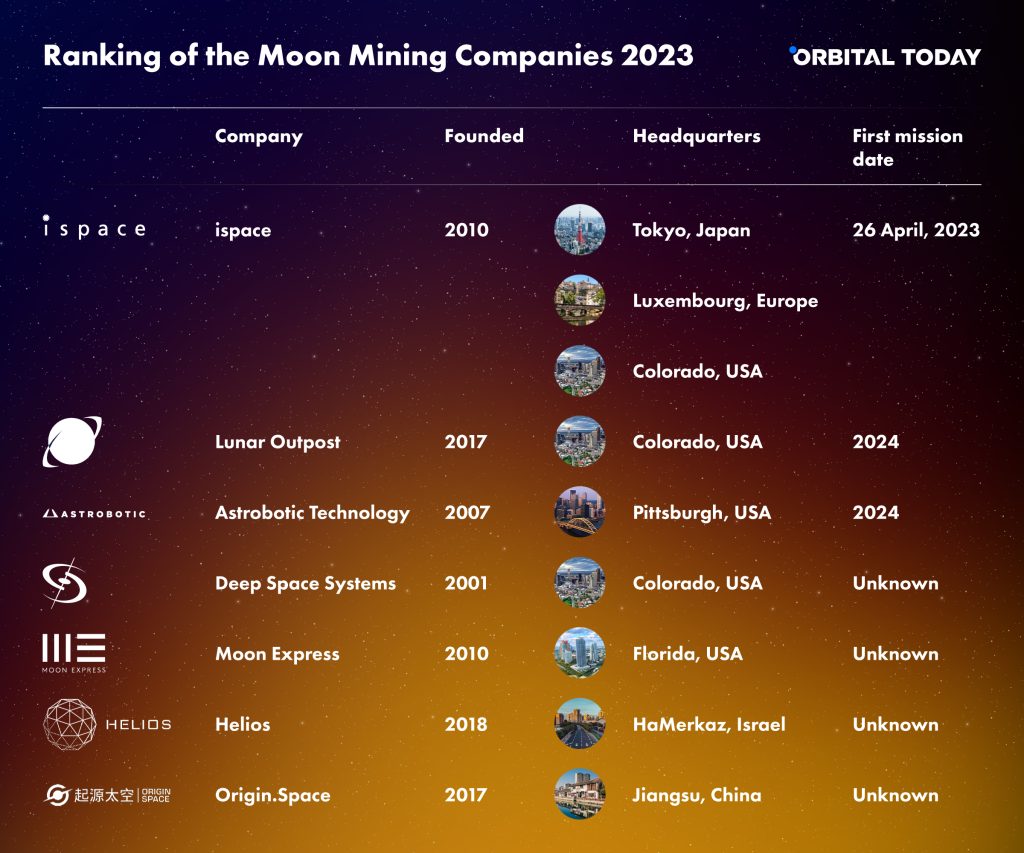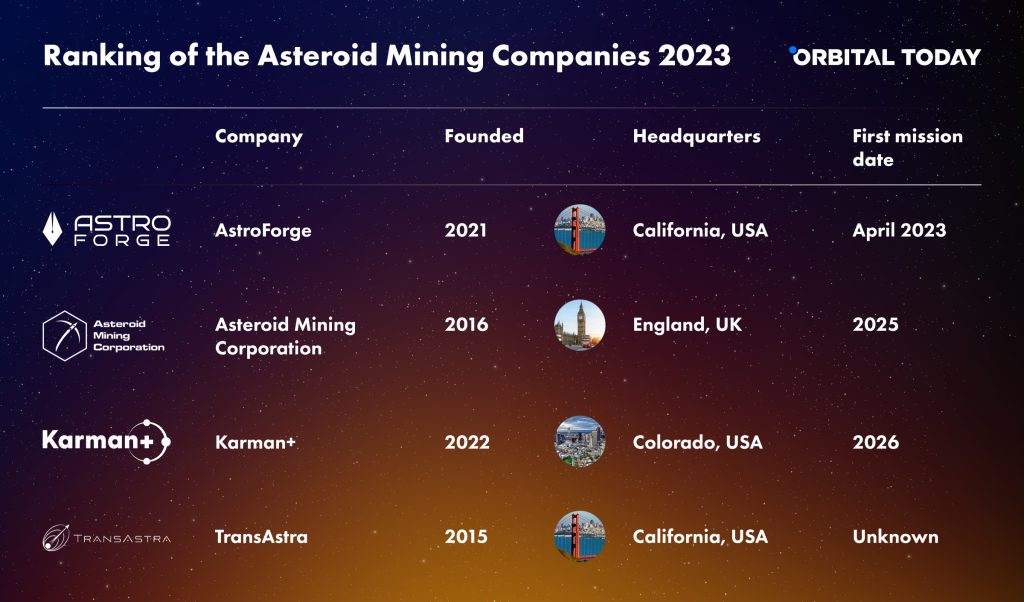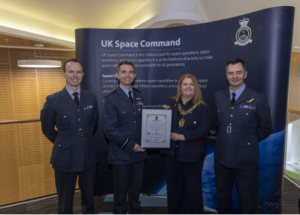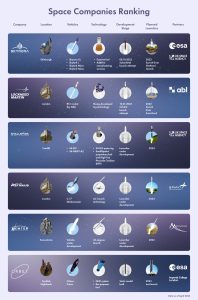Space Mining Companies 2023 – Who is leading the lunar gold rush?
11th Oct 2023
In 2015, the American Congress passed, and President Obama signed the world’s first national space resources law. This was a major starting point for space mining companies and startups to move from science-fiction to the business strategy stage. Long ago, scientists discovered that the Moon, asteroids, and other objects beyond Earth contain valuable resources, such as platinum, gold, aluminium, silver, nickel, and even water. When it comes to space mining companies 2023, the field’s just being discovered
While the moon mining industry is just at the beginning stage, new startups are appearing to create satellites, robots, and other advanced tools necessary to enable the extraction of resources in space. Let’s take a closer look at some leading space mining companies in 2023 that are exploring innovative ways to venture into outer space.
Space mining companies 2023 – are there any?

The companies’ product updates, progress, and mission schedules lay at the centre of our ranking. While none of the companies has any profit or space mining experience, we still tried to rank the startups considering those still in the concept phase compared to those that already have contract and launch dates.
| Company | Founded | Headquarters | First mission date |
| ispace | 2010 | Tokyo, Japan; Luxembourg, Europe; Colorado, USA | 26 April, 2023 |
| Lunar Outpost | 2017 | Colorado, USA | 2024 |
| Astrobotic Technology | 2007 | Pittsburgh, USA | 2024 |
| Deep Space Systems | 2001 | Colorado, USA | Unknown |
| Moon Express | 2010 | Florida, USA | Unknown |
| Helios | 2018 | HaMerkaz, Israel | Unknown |
| Origin.Space | 2017 | Jiangsu, China | Unknown |
ispace
The Tokyo-based company Ispace builds robots, spacecraft and other technology for space missions. The company is one of the leaders in the global market in winning contracts from space agencies. Their main goal is to help their clients find, map, and use natural lunar resources.
Ispace already has experience in launching Moon missions. In April 2023, the Japanese uncrewed lunar landing mission, Hakuto-R Mission 1, failed to land on the Moon’s surface. Despite the mission ending with a glitch and a crash on the Moon, the company demonstrated its technology and product.
The company confirmed to OrbitalToday via email its plans for Mission 2, scheduled for 2024, and Mission 3 in 2026. “The Mission 2 lander will be the same type of lander as the Series 1 lander, which was used during our first mission.”
On 28 September 2023, the company revealed its new lander design, Apex 1.0, which will carry NASA payloads to the Moon in 2026. Apex 1.0 can deliver up to 300 kg (660 lbs) of cargo to the lunar surface, while Series-2 can only carry 30 kg (66 lbs).
On 26 April 2023, ispace made an attempt to land its Hakuto-R lander on the Moon’s surface. The craft was launched by a SpaceX rocket in December and took five months to reach its destination. Despite the rover being lost during the landing, the mission can still be looked at as a successful attempt for a private space company considering that it that far.
The main goal of the Japanese mission was to assess the viability of commercial launches to the lunar surface. This mission was the first step for ispace, and they plan to do even bigger ones in the future. For instance, ispace aims to develop a series of landers to provide commercial services for a sustained human presence on the lunar surface. This might include sending equipment for digging up stuff and making fuel for rockets.
Ispace has regional offices in the United States and Europe.
Lunar Outpost
Since embarking on its mission in July 2021, Lunar Outpost has been hard at work crafting the Lunar Vertex MAPP rover, set to play a pivotal role in a NASA-funded scientific exploration expedition slated for 2024. This mission finds its genesis in the NASA Payloads and Research Investigations on the Surface of the Moon (PRISM) initiative. In 2023, Lunar Outpost has delivered its first flight model rover, MAPP, to the Johns Hopkins University Applied Physics Laboratory (APL) in Laurel, Maryland, for integration and final testing.
This intriguing journey’s destination is the enigmatic Reiner Gamma site, situated near the lunar equator. There, the lunar landscape bears witness to a captivating phenomenon – the lunar swirl, typified by an inexplicably radiant marking that winds its way across the lunar terrain, stretching over vast expanses.
Astrobotic Technology
Astrobotic Technology is a private American company focused on creating advanced robots for space missions to the Moon and other planets. It was established in 2007 by Red Whittaker, a professor at Carnegie Mellon University, and his team, with the aim of winning the Google Lunar X Prize.
In 2019, NASA selected Astrobotic Technology to build a prototype robot capable of mining water and methane ices at the lunar poles. These substances can be used to refuel spacecraft used by astronauts for their return journey to Earth, potentially reducing the cost of human missions to the Moon by half.
Additionally, on 11th June 2020, Astrobotic secured a significant NASA contract as part of the Commercial Lunar Payload Services program. NASA agreed to pay Astrobotic $199.5 million for a mission to transport the VIPER rover to the Moon, with a planned landing in November 2024.
Deep Space Systems (Redwire)
Deep Space Systems (DSS) was a private aerospace company dedicated to systems engineering, formed in 2001. In June 2020, the company merged with Adcole Corp. to form Redwire.
DSS still remains part of the Redwire company, focusing on systems engineering, spacecraft design, development, integration and testing, deep space mission operations, and high-definition space-qualified cameras. In 2018, two years before the merger, Deep Space Systems was chosen for NASA’s Commercial Lunar Payload Services (CLPS) program.
In 2022, Redwire participated in NASA’s Break the Ice Lunar Challenge, advancing to Phase II Level 2 of the competition.
The aim of NASA’s Break the Ice Challenge design competition is to accelerate the progress of digging and transportation technologies on the Moon’s surface. Teams from around the globe are invited to contribute to the creation of a sustainable human presence and a flourishing economy on the Moon by utilizing the resources already available there.
Moon Express
Moon Express, founded in 2010 by a collective of Silicon Valley and space enthusiasts, is a privately owned American company in its early stages. This innovative company is dedicated to the creation of robotic spacecraft for affordable missions that extend beyond Earth, encompassing destinations such as the Moon, asteroids, and Mars. From late 2018 and up to February 2020, Moon Express directed its efforts towards collaborating with NASA under the Commercial Lunar Payload Services (CLPS) contract. Their core mission revolves around unlocking the abundant resources of the Moon for the benefit of humanity and forging fresh pathways for commercial space endeavours outside Earth’s orbit.
We haven’t found any news regarding its products and progress in recent years.
Helios
Israeli startup Helios specializes in developing advanced technologies for in-situ resource utilization in space. Their primary focus revolves around their innovative electrolysis reactor, which extracts oxygen and various metals from oxides found on the Martian and lunar surfaces.
One of Helios’s key projects is centred on oxygen mining on the Moon. They are working on technologies to extract oxygen from lunar regolith, serving as crucial rocket fuel oxidizer. This process has the potential to significantly reduce the cost of future space activities. At the core of their system is the MRE Reactor, which melts lunar regolith and uses electrolysis to separate oxides into oxygen and various valuable metals like iron, aluminium, and titanium.
Producing oxygen on the Moon carries the advantage of reducing the need to transport oxygen from Earth beyond Low Earth Orbit (LEO), whether for lunar surface operations, cislunar space missions, or missions to Mars. This reduction in launch mass has the potential to lower costs and promote a more sustainable future for human exploration beyond Earth.
Origin.Space
Origin.Space is China’s first space company to explore, develop, and utilise space resources. Initially, they focus on providing data services as their entry point into the space industry. However, Origin Space has broader ambitions. They are gradually expanding their operations to encompass more advanced space activities, such as on-orbit servicing and the commercial utilization of space resources. To achieve these goals, they collaborate with universities, conduct research missions, observe objects in space, establish a comprehensive space object database, and engage in various other space-related businesses.
NEO-X Space Mining Robot and M² Lunar Rover are among the company’s products, but we lack fresh updates on their progress or possible launch dates.
In essence, Origin Space is playing a pivotal role in China’s space endeavours, with a specific focus on leveraging cutting-edge technologies and resources from space for the benefit of humanity and commercial interests.
Asteroid Mining Companies

| Company | Founded | Headquarters | First mission date |
| AstroForge | 2021 | California, USA | April 2023 |
| Asteroid Mining Corporation | 2016 | England, UK | Unknown |
| Karman+ | 2022 | Colorado, USA | 2026 |
| TransAstra | 2015 | California, USA | Unknown |
AstroForge
AstroForge is a very ambitious project, based in California, US. “We mine asteroids”, says its website. The asteroid mining company wants to extract gold and other minerals from asteroids at a lower cost and smaller carbon footprint than the current terrestrial mining methods.
In May 2022, AstroForge secured $13 million in seed funding to kickstart their mission of becoming the first commercial company to mine asteroids and bring their materials back to Earth. In April 2023, the startup launched a space mining test, 6U CubeSat, called Brokkr-1, aboard a SpaceX rideshare mission. Brokkr-1 was built by U.K. company OrbAstro. The small spacecraft was designed to validate AstroForge’s technology in space by performing its refining process on a pre-loaded asteroid-like material while in orbit.
The second mission, scheduled for October 2023, will be part of a SpaceX lunar rideshare with Intuitive Machines, OrbAstro, and Dawn Aerospace. This expedition will take them into deep space to observe their target asteroid, preparing for their first retrieval mission.
Asteroid Mining Corporation
The Asteroid Mining Corporation stands as the United Kingdom’s pioneering space mining company. Its primary aim is to develop groundbreaking technologies that will enable the extraction, processing and use of materials derived from space objects.
According to its website, the company is currently working on robotic and satellite platforms to enable the exploration and extraction of off-world resources, including from asteroids. The AMC collaborates with the Space Robotics Lab at Tohoku University in Japan to develop SCAR-E – Space Capable Asteroid Robotic Explorers. These robots will explore asteroids, planets, and the Moon. They can also work in mines.
SCAR-E robots are built to handle radiation, going into space, and extreme temperatures. AMC is on track to launch APS-1, a microsatellite space telescope, into sun-synchronous Low Earth Orbit in 2025.
Karman+
Karman+ is an asteroid mining startup from the Netherlands that moved to Colorado, US and is focusing on mining space resources from near-Earth asteroids. In such a way, the company aims to provide abundant, sustainable energy and resources in space and for Earth.
The company plans to launch its first asteroid mining mission, called High Frontier, in early 2026. The fundamental objective of this mission, according to the company’s statement, is to land on the target asteroid and retrieve a kilogram-scale sample from the asteroid’s surface.
TransAstra
TransAstra, a US-based space-logistics startup, develops a technology to find, prospect, harvest and use space resources, including water and other valuable materials to be found on asteroids and lunar poles.
TransAstra’s unique approach to asteroid mining is its Optical Mining. The company says, that Earth-based mining techniques will not work on asteroids, but Optical Mining will. Optical Mining uses focused sunlight to efficiently extract resources from asteroids and space debris.
But that’s not the only focus of the company. For instance, in 2023, it won a NASA contract to manufacture a bag to capture orbital debris.






Thank you for your comment! It will be visible on the site after moderation.